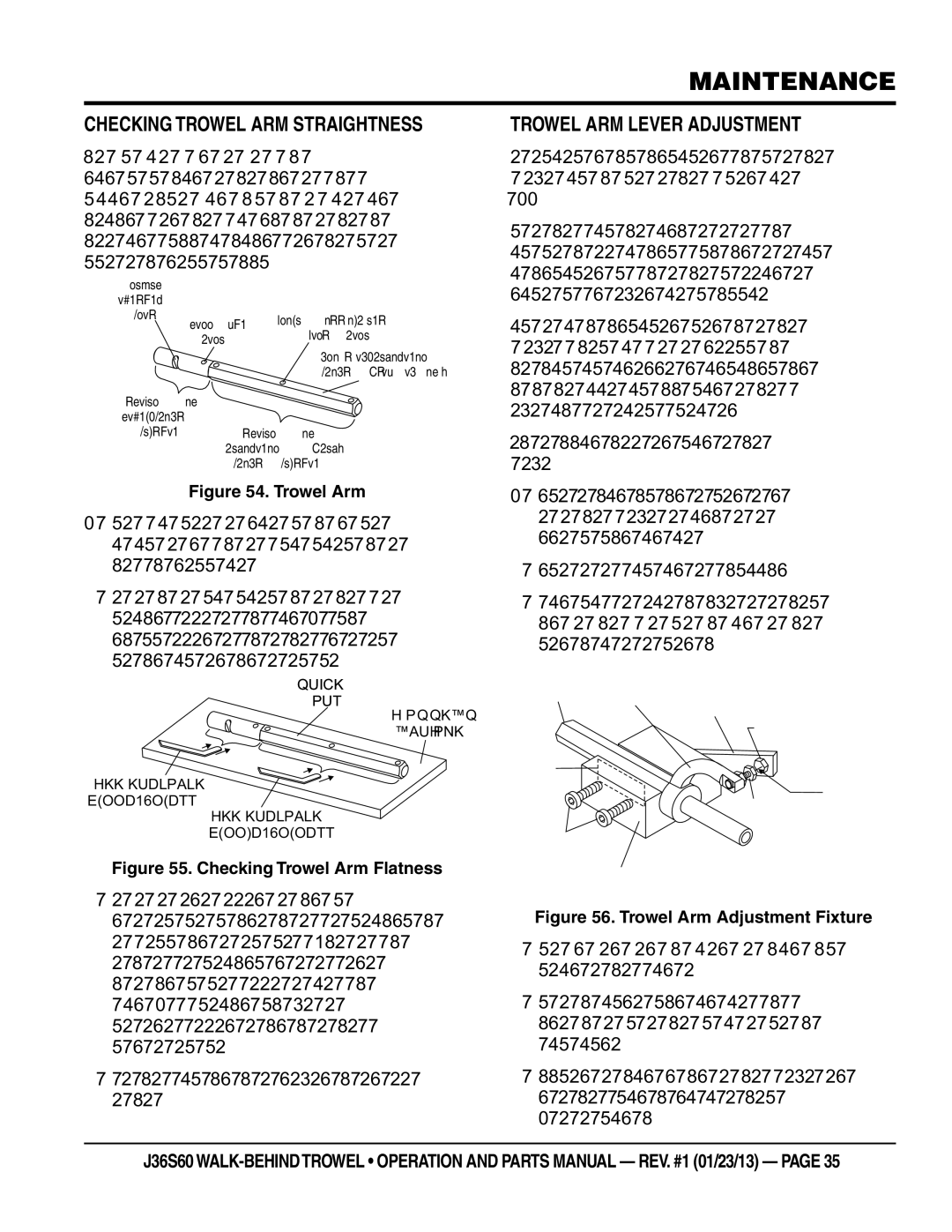J36S60 specifications
The Multiquip J36S60 is a versatile and robust generator designed for various applications, ranging from construction sites to outdoor events. With a focus on reliable power and durability, the J36S60 is engineered to meet the demanding requirements of professionals and contractors alike.At the heart of the J36S60 is its powerful engine, which provides a maximum output of 36 kVA. This generator is equipped with a 60Hz, 240V output, making it suitable for a wide range of equipment and tools. The J36S60 features a fuel-efficient design, allowing for extended run times that minimize downtime on job sites. It can operate for hours on end, ensuring that you have continuous power for critical tasks.
One of the standout features of the J36S60 is its state-of-the-art control panel. The intuitive control panel provides clear access to various functions, making it easy for users to monitor power output, fuel levels, and maintenance intervals. The panel includes circuit breakers, hour meters, and an easy-to-read digital display, ensuring that operators have all necessary information at their fingertips.
Additionally, the Multiquip J36S60 generator incorporates advanced technologies for noise reduction and fuel efficiency. Its innovative design includes sound-dampening materials and a high-capacity silencer, resulting in quieter operation compared to traditional generators. This feature makes it especially suitable for urban environments where noise regulations are strictly enforced.
The J36S60 is built with durability in mind. The heavy-duty steel frame and powder-coated finish ensure that it can withstand the rigors of demanding job sites and adverse weather conditions. Furthermore, the unit is designed for easy transport, with integrated lifting hooks and a compact design that allows for convenient positioning and relocation.
Safety is a priority with the J36S60, which comes equipped with multiple safety features including low oil shutdown, overload protection, and an emergency stop button. These safety mechanisms ensure that both the operator and the machinery are protected during operation.
Overall, the Multiquip J36S60 is a high-performance generator that excels in providing reliable power in a variety of settings. Its combination of power output, efficient fuel consumption, user-friendly controls, and robust build quality makes it an excellent choice for construction professionals, event coordinators, and anyone in need of dependable portable power.

